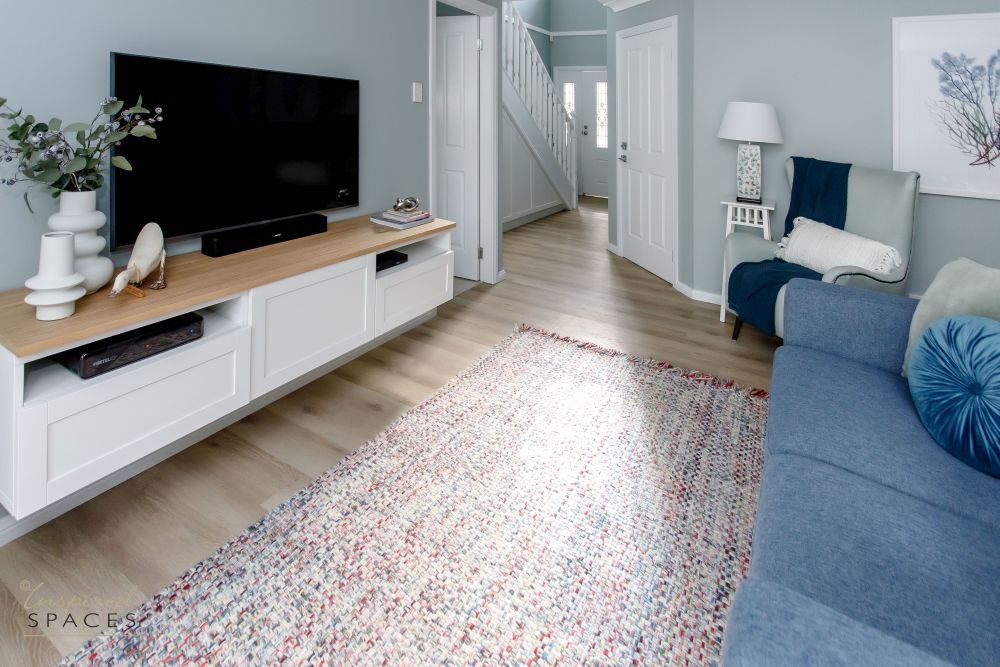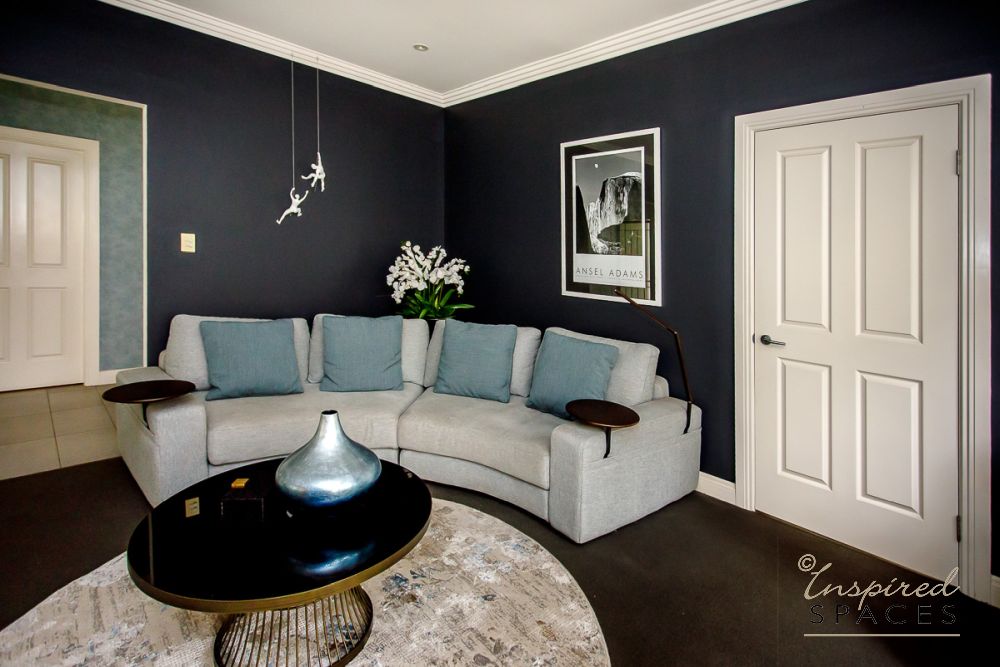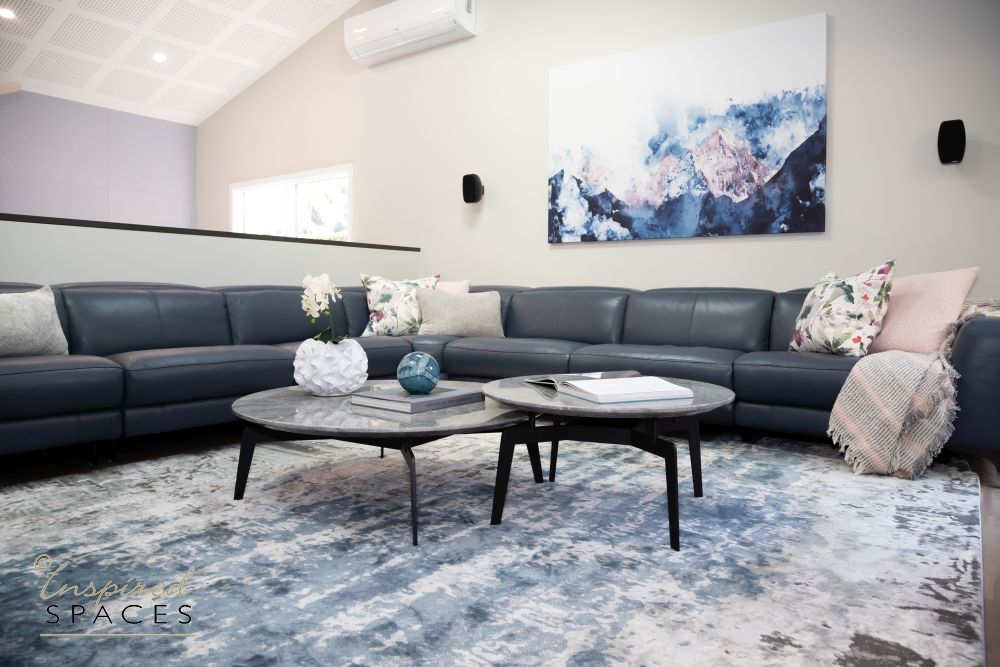Choosing the right rug is more challenging than it seems. Rugs are more than just floor coverings; they are a statement of style, comfort, and functionality in your living space. They provide a visual focal point to any room design. The right rug can transform a space, adding texture, warmth, comfort, and personality. With so many options, sizes, styles, and colours, selecting the perfect rug can be overwhelming.
A rug can dramatically change the look and feel of a room without a hefty price tag, making it an ideal solution for a quick makeover. To create a well-balanced space, it’s crucial to figure out the right size and shape for your rug, as it can differ for each area in your home. You must also consider what style, colour, and texture suit your house, needs, and personality. This blog explores key factors to consider when shopping for your rug.

Scale & Size
A rug must be scaled to complement the room’s dimensions, furniture layout, and overall aesthetic. Start by assessing the room’s size. A large room can accommodate a larger rug, while a smaller room may require a more compact option. When deciding on size, work with the principles of proportion. The carpet should be at least 15 cm and no more than 60 cm from the wall.
Entrances & Hallways
Runners are often a good choice for entryways and hallways. An entryway rug width should match the door space or be a few cm either way (not too long or short). If you use a round area rug in a foyer, centre it under the light fixture. In a hallway, stretch the rug length to fill the space, leaving even space on both ends for balance. Keep any furniture in the hallway if you plan to place it off the rug.

Living Spaces
A rug should be used as the anchor point in a living room. It should be large enough for at least all your furniture’s front legs to rest on, creating a cohesive look. If you have the space, invest in a rug that provides enough space for the furniture to sit on top. Generally, a 1.6m x 2.3m rug is the same width and length as an average three-seater sofa. In dining rooms, rugs must be large enough to accommodate dining chairs in the pulled-out position, ensuring the legs do not fall off the rug.
Creating Zones
In a large room, more than one rug may be needed to define separate areas. You can layer rugs to create distinct zones within one room, inside and out. For example, in an ample open-plan living space, you could use a rug to differentiate the living from dining areas, with each space having a large rug for the furniture.
Colours & Patterns
The Colour and pattern of a rug play a significant role in defining a room’s ambience and style, often swayed by personal choice. Adding a colourful rug to a scheme will make a statement, but ensure it complements all the other elements in the room. It should balance against fabric and paint colours, furniture and lighting shapes and sizes. Neutral-coloured rugs like beige, grey, or white are versatile and timeless, blending into any décor style and serving as a backdrop for other vibrant design elements.
Consider a patterned or graphic rug if your room needs that “wow” factor. Whether geometric, floral, or abstract, patterned rugs can add visual interest and depth to a room. They are great for adding texture, especially where existing furniture feels lost. Ensure your chosen pattern complements the room’s existing décor and doesn’t clash with other patterns.
Materials
Rugs come in various materials, each with its look, feel, and maintenance requirements. The choice of material depends on your lifestyle, budget, and the room’s purpose. High-traffic areas require durable, easily washable materials. Natural materials like wool or hemp are popular choices. Wool rugs are soft, durable, and naturally stain-resistant, making them excellent for high-traffic areas.
Natural fibres like jute, seagrass, or sisal offer a relaxed, organic look. They add warmth and texture and are suitable for bohemian or coastal-style homes. However, they are more soft underfoot than wool or synthetic options. Synthetic rugs like polypropylene or nylon are more affordable, easy to clean, and ideal for households with children and pets. Silk rugs, while luxurious and visually stunning, are delicate and require careful maintenance, making them unsuitable for busy family homes.
Budget Considerations
Your budget is a vital factor in your rug selection process. Rugs come in a wide range of prices, from affordable to luxury. Set a realistic budget based on your needs and preferences, and add a little extra to accommodate the cost of a rug pad to protect your floors and enhance the rug’s comfort. Incorporating a rug pad can significantly impact the longevity of your rug and its feel underfoot.

Key Factors
Selecting the right rug involves careful consideration of size, material, colour, pattern, style, and budget. By focusing on these critical factors, you can find a rug that enhances the visual appeal of your space while adding comfort and functionality. Remember, placing an attractive rug within a furniture setting immediately impacts and refreshes a space.
For personalised interior design advice and more tips on choosing the perfect rug, visit Inspired Spaces and explore our range of design services tailored to your needs.





Leave A Comment Or Ask A Question